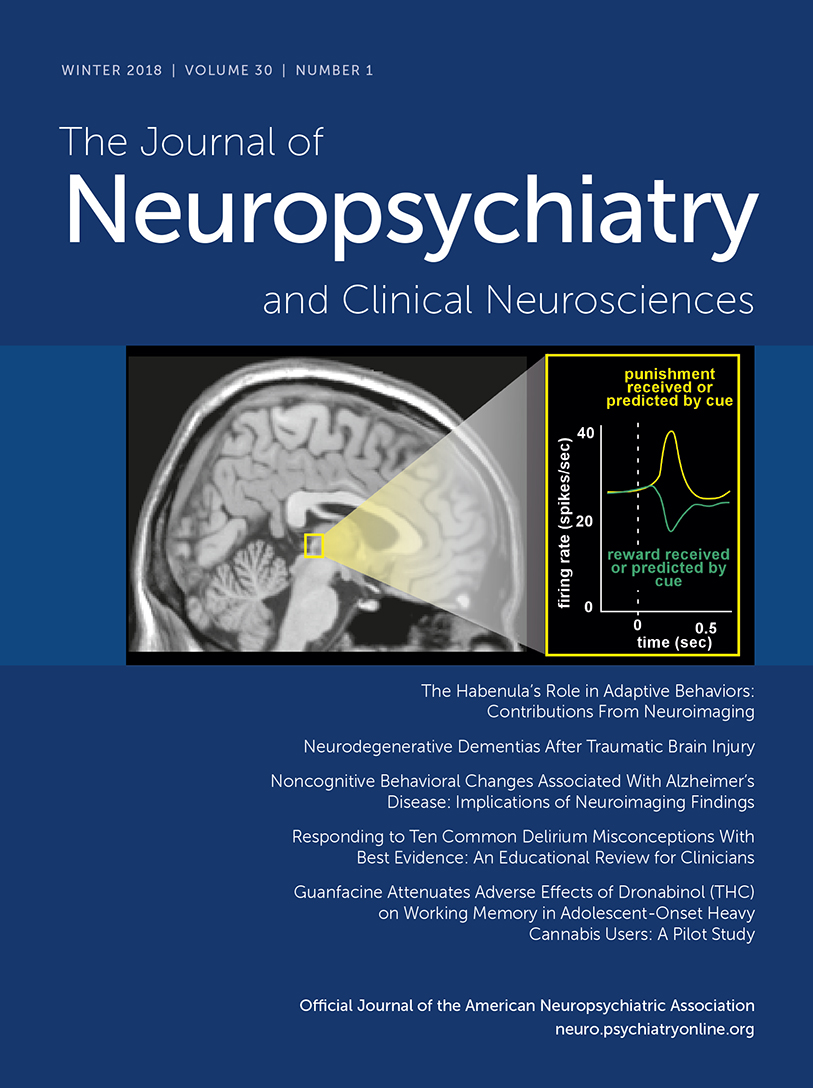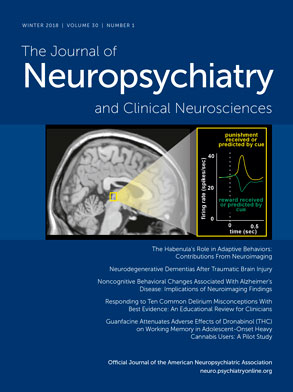Over 30 years ago, in 1985, with my mentor Stuart Yudofsky, M.D., as senior author, we wrote a chapter for
Psychiatry Update, Volume 4, titled “Psychiatric Aspects of Brain Injury: Trauma, Stroke and Tumor.”
1 That topic was expanded to focus on traumatic brain injury (TBI) in the first
Textbook of Neuropsychiatry,
2 published in 1987 and edited by Dr. Yudofsky and Robert E. Hales, M.D., M.B.A. Several years later, we expanded that chapter and edited the book focusing on this topic,
Neuropsychiatry of Traumatic Brain Injury (published in 1994),
3 which was subsequently revised and renamed the
American Psychiatric Publishing Textbook of Traumatic Brain Injury (with the addition of Thomas McAllister, M.D., as editor), published in 2005,
4 with a second edition published in 2011.
5The field of TBI has come a long way since then, when TBI was a topic in which few were interested, and it was discussed, if at all, at the last session of any psychiatric meeting. Presently, we are in the final preparations for the Textbook of Traumatic Brain Injury, 3rd Edition, with David Arciniegas, M.D., joining Tom McAllister and me as editors. Before we revised the book, we had to come to terms with the realization that we do not think of TBI in the same way we did 30 years ago. In fact, the initial way of thinking about TBI that formed the basis of the 1985 chapter was kept intact and expanded upon over the years. We decided not to revise an old book, but essentially start a new book, which has almost all new authors for 50 chapters. We are excited about this new edition and believe we have assembled an excellent group of experts who will give clinically relevant information. We believe that there are chapters in this book that should be published separately, as Special Articles in the Journal of Neuropsychiatry and Clinical Neurosciences, because of their immediate relevance. These articles represent core disorders of the specialty of Behavioral Neurology & Neuropsychiatry: neurodegenerative disorders, comorbid neurologic and psychiatric disorders, and psychiatric manifestations of neurologic disorders.
In our book
Neuropsychiatry of Traumatic Brain Injury, Barry Fogel, M.D., and James Duffy, M.D., wrote the first article, to our knowledge, focusing on TBI and the elderly, with two pages discussing the association of TBI with dementia.
6 Now, the concern about the development of neurodegenerative dementias after TBI is an area that is frequently discussed in news articles and of public concern. This topic has a literature that needs an independent interpretation from a group of experts. In this issue of the
Journal, Christian LoBue, Ph.D., and colleagues
7 have provided such an interpretation. How much of a risk factor is TBI? Are all dementias the same (dementia with Lewy bodies, frontotemporal dementia, Alzheimer’s disease)? How do these relate to the entity of “chronic traumatic encephalopathy?” LoBue and colleagues discuss possible mechanisms and a model for the interactions of TBI and dementia. We believe that their article provides an unbiased and reasoned perspective on the current literature.
The literature on the occurrence of psychiatric disorders among individuals who have experienced a TBI has developed over the past decades, from reporting symptom occurrence to the administration of standardized diagnostic interviews. In previous editions of our book, we decided that each chapter on a particular disorder should include discussions on specific diagnostic entities (depression, substance use, anxiety, psychosis, etc.). However, we realized that these disorders often do not occur in isolation, and patients are at risk for the development of multiple disorders. What then was required was a comprehensive overview of the epidemiology and natural history of the entire spectrum of psychiatric disorders in TBI. Jennie Ponsford, Ph.D., Yvette Alway, D.Psych., and Kate Rachel Gould, D.Psych., provide us with an expert guide through this complicated landscape.
8We are also publishing a review of one psychiatric disorder with a more complicated interaction with TBI: posttraumatic stress disorder (PTSD). When we published our first chapters, it was believed that patients could not have TBI and PTSD. In our first book, Richard Epstein, M.D., and Robert Ursano, M.D., wrote three pages on PTSD (including a table of overlapping postconcussion symptoms).
9 In a subsequent Special Article, Jennifer Vasterling, Ph.D., Shawna Jacob, Ph.D., and Ann Rasmusson, M.D.,
10 discuss the co-occurrence of TBI with PTSD. There is now a wealth of research information demonstrating the complicated diagnosis, prognosis, and treatment of this comorbidity. The authors provide a superb overview of this topic.
It is our hope that these Special Articles will be of immediate clinical relevance in the assessment and treatment of our patients. Our upcoming book, Textbook of Traumatic Brain Injury, 3rd Edition, is a reconceptualization of the neuropsychiatry of TBI, not a revision. New areas of discussion include the role of biomarkers, the importance of biomechanical forces, deficits in social cognition, emotional and behavioral dyscontrol, suicide, somatic sequelae (vision problems, dizziness, neck issues, headache, endocrine disorders, sexual dysfunction, and epilepsy), lifelong living after TBI, and alternative treatments, as well as an expanded section covering mild TBI in different settings and patient populations (e.g., military, sports, and children). Our book will also include discussions on pathophysiology and specific recommendations for assessment and treatment.
The recognized experts who have contributed to this upcoming volume are impressive, and we are indebted to them for providing their wisdom. It is our hope that these Special Articles from our textbook will increase your interest in the book.

